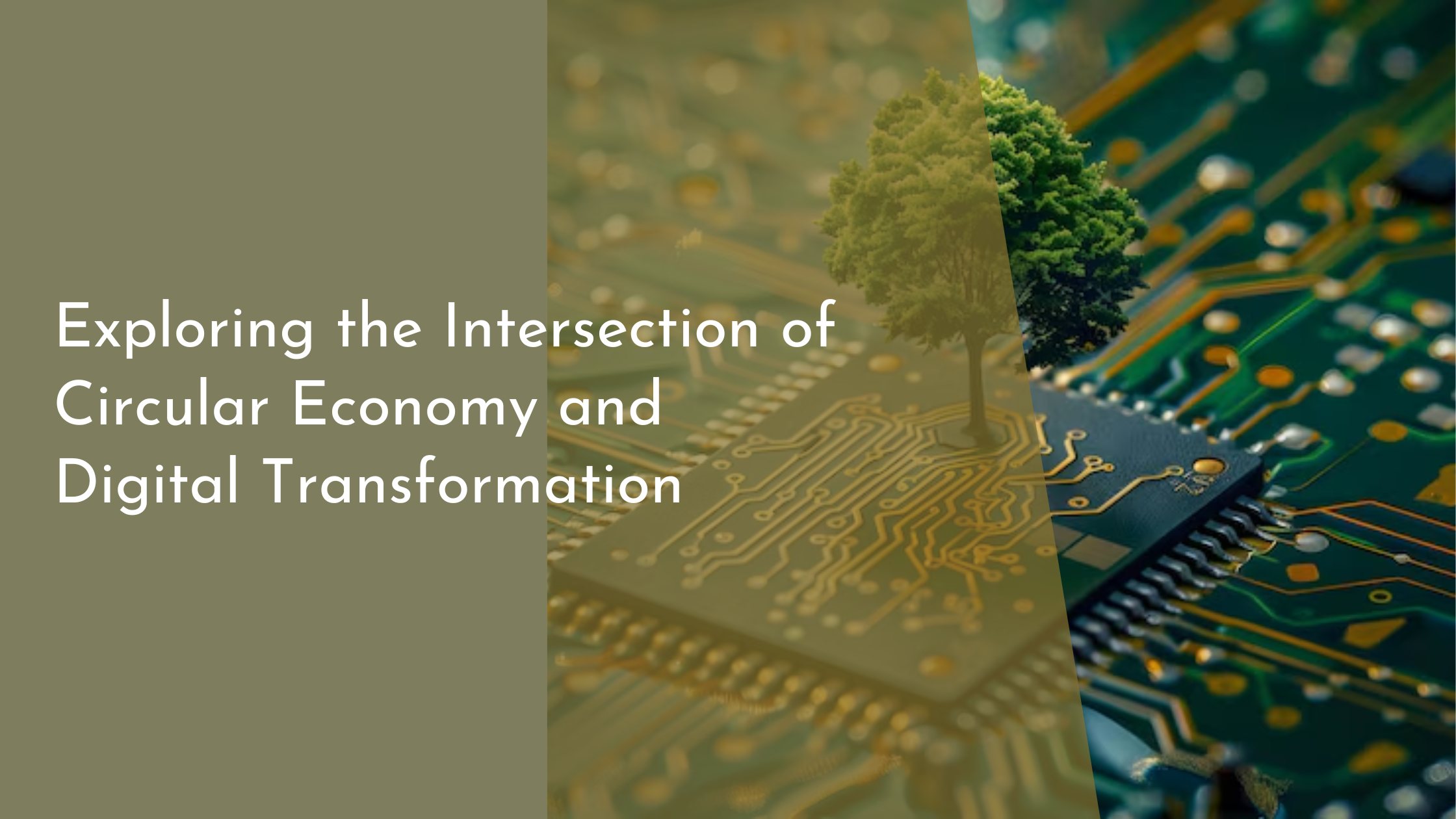Exploring the Intersection of Circular Economy and Digital Transformation
In recent years, the intersection of circular economy and digital transformation has become a pivotal focus for businesses and policymakers striving for sustainability. The circular economy offers a restorative and regenerative approach to production and consumption, emphasizing the continual use of resources. On the other hand, digital transformation involves integrating digital technology into all areas of business, fundamentally changing how they operate and deliver value. Together, they create an innovative synergy that promises a sustainable future for our planet and industries. In this article, we will delve into the core concepts of the circular economy, explore the role of digital tools in this transformation, and highlight innovative technologies and real-world success stories that are driving sustainability efforts.
Understanding Circular Economy Concepts
The circular economy is a model that challenges the traditional linear approach of “take, make, dispose” by focusing on designing out waste and pollution, keeping products and materials in use, and regenerating natural systems. Instead of continuously extracting finite resources, a circular economy promotes closed-loop systems where products, components, and materials are reused, refurbished, remanufactured, or recycled. This approach not only conserves resources but also reduces environmental impact, creates economic opportunities, and fosters innovation.
Fundamentally, the circular economy is rooted in three key principles: design for longevity, prioritize regenerative resources, and rethink waste as a valuable input. Design for longevity involves creating products that are durable and easy to repair or upgrade. Prioritizing regenerative resources encourages the use of renewable or biodegradable materials. Finally, viewing waste as a valuable input involves developing systems that transform waste streams into resources for new production. By adopting these principles, businesses can create systems that are not only sustainable but also economically viable.
The Role of Digital Tools in Transformation
Digital tools play a crucial role in transforming businesses towards circularity by enabling the efficient use and tracking of resources throughout their lifecycle. Technologies such as the Internet of Things (IoT), blockchain, and big data analytics provide unprecedented visibility and control over supply chains, allowing businesses to monitor, manage, and optimize resource flows in real-time. For instance, IoT sensors can track the condition and location of products, facilitating maintenance and recovery processes to extend their lifecycle.
Moreover, digital tools empower consumers by providing transparency and information about the sustainability of products, encouraging responsible consumption. Platforms and applications that offer insights into the environmental impact of products help consumers make informed choices, driving demand for sustainable goods. This shift in consumer behavior reinforces the circular economy principles and pressures companies to innovate and adopt sustainable practices.
Innovative Technologies Driving Sustainability
Innovative technologies are at the heart of driving sustainability within the circular economy. 3D printing, for example, allows for on-demand production, minimizing waste by using exact amounts of material required and enabling the recycling of 3D printed parts. This technology also supports the repair and upgrade of existing products, contributing to longer product lifecycles and reducing the need for new resources.
Artificial intelligence (AI) complements these efforts by optimizing resource use and waste management through predictive analytics and machine learning. AI algorithms can identify patterns and predict maintenance needs, ensuring that products are used efficiently throughout their lifespan. Additionally, AI-driven systems can sort and recycle materials more effectively, enhancing the overall efficiency of recycling processes and reducing waste.
Case Studies: Success Stories in Action
Several companies have successfully integrated circular economy principles with digital transformation to achieve significant sustainability milestones. For instance, global furniture retailer IKEA has embraced circularity by implementing digital tools to take back and refurbish used furniture, extending the lifecycle of their products. Their “Circular Hubs” allow customers to return unwanted items, which are then repaired and resold, reducing waste and promoting a circular ecosystem.
Another compelling case is that of Schneider Electric, a multinational corporation specializing in energy management and automation. Schneider Electric leverages IoT and digital twin technologies to optimize their products’ energy efficiency and lifecycle management. By creating digital replicas of their products, the company can simulate performance and maintenance needs, enhancing product longevity and reducing environmental impact.
Conclusion: Embracing a Sustainable Future
The intersection of circular economy and digital transformation offers a powerful avenue for achieving sustainability goals worldwide. By integrating digital tools and innovative technologies, businesses can transition from traditional linear models to systems that promote resource efficiency, waste reduction, and regeneration. This shift not only benefits the environment but also encourages economic growth and resilience, creating a more sustainable future for all.
Embracing the synergy between circular economy and digital transformation is not just an opportunity but a necessity in our journey towards a sustainable future. As businesses and consumers increasingly recognize the importance of sustainability, the adoption of circular economy principles, powered by digital advancements, will play a pivotal role in shaping industries and economies. By fostering collaboration, innovation, and a commitment to sustainable practices, we can build a world where prosperity and environmental stewardship go hand in hand.

